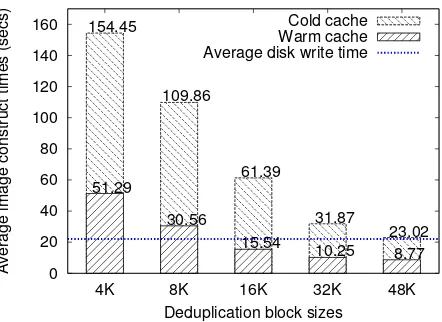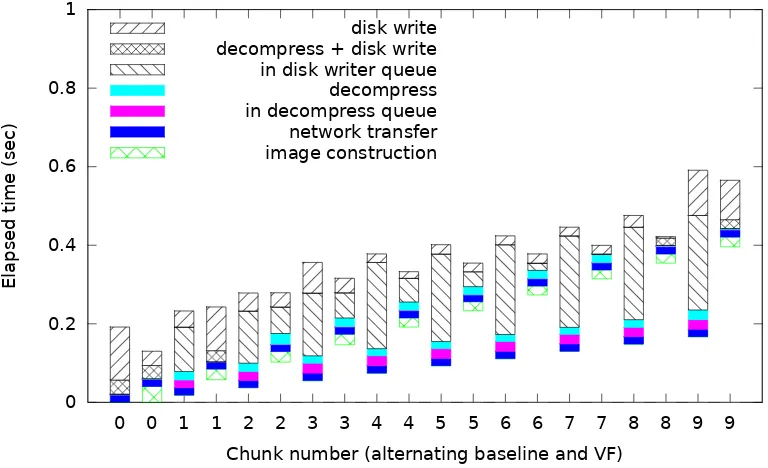Using Deduplicating Storage for Efficient Disk Image Deployment
Full text
Figure




Related documents
Best practice for creating tape and disk copies at both sites These approaches for primary as secondary site can be combined in situations where tape copies are
In conclusion, we found fluid shear stress-induced SMAD2/3 activation and target gene expression in ciliated and non-ciliated PTECs, suggesting that cilia are not criti-
• Disk latency is one average seek time plus the rotational latency. • Disk bandwidth is the peak transfer time of formatted
AITS offers a wide variety of storage capabilities including tape, virtual tape, and multiple tiers of disk storage for distributed systems environments including fiber channel
physical RAID-5 as well as multiple servers and storage blades that are tied together in a virtual raid configuration, HP bladed storage can handle failures at the disk,
Figure 6 shows the impact of additional workload resulting in I/O bottlenecks that negative impact performance by increasing response times (grey curve) above acceptable levels..
BIOS Disk IO Driver Disk IO Network Storage TC client TC Server Delta Image 1 File system converter Disk IO User authen table Disk Mapping Table Local storage Storage
Storage Technologies Virtual Disk Image Formats Storage Technology Comparison XenServer Storage Architecture Storage Repository Architecture Multiple Storage Repositories Local

